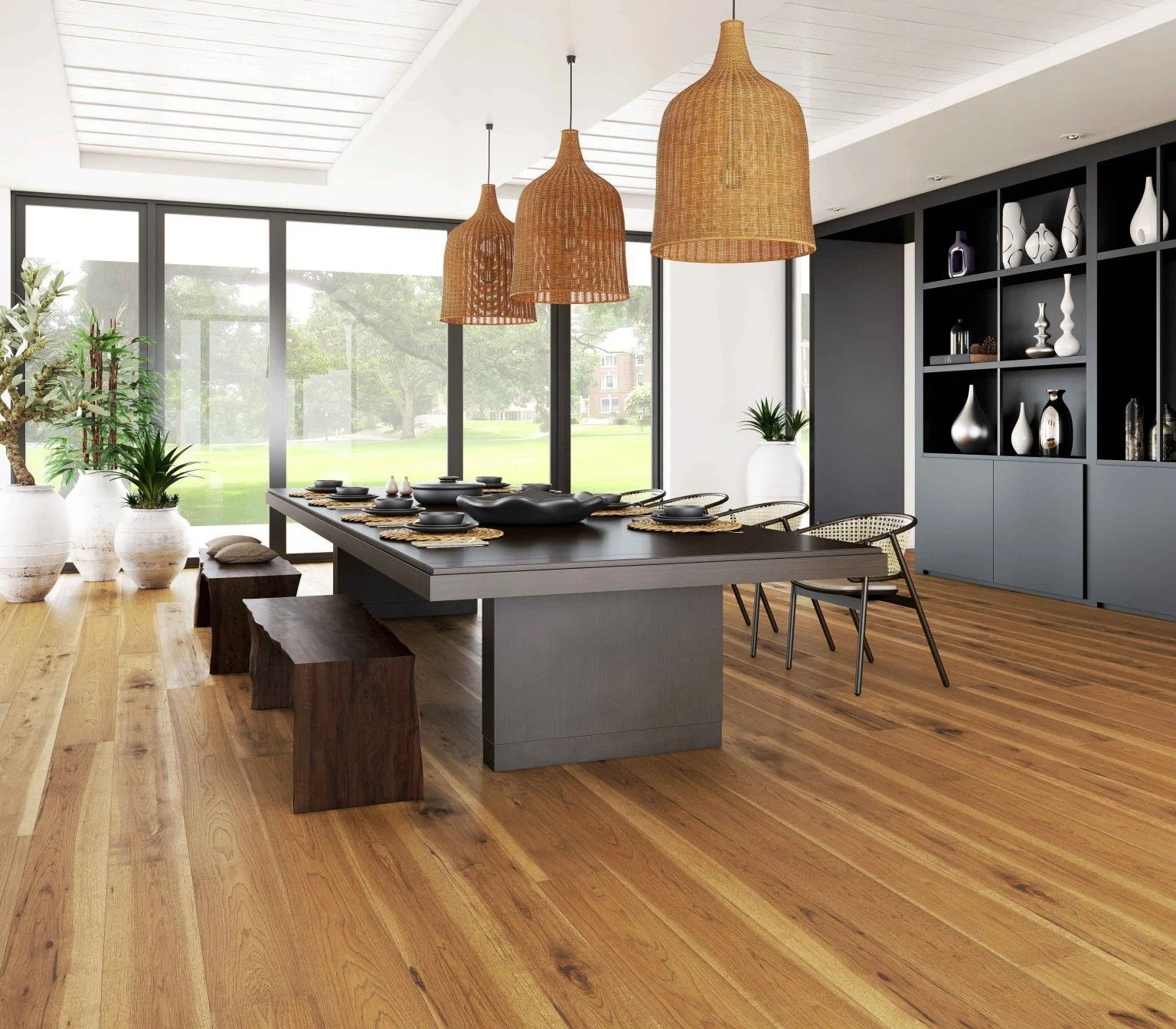If you’re choosing hardwood flooring in 2025, Hickory deserves serious attention. Not just for its rustic charm but for its unbeatable combination of strength, style, and staying power. Let’s break down why Hickory still tops the list for homeowners and designers alike.
What Makes Hickory So Durable?
Hickory is one of the hardest domestic hardwoods available. Rated between 1,820–2,140 on the Janka hardness scale, it easily outperforms Red Oak and even White Oak in resilience. For families, pet owners, or high-traffic homes, this means fewer dents, less wear, and floors that still look good years down the line.
But durability isn’t just about hardness—it’s also about grain. Hickory has a varied, complex grain that naturally hides scuffs and imperfections better than smoother-grained woods.
Curious how Hickory compares to other woods? Check out our full breakdown here: Hickory Hardwood Flooring – What Makes It Durable, Beautiful, and Worth the Investment
Aesthetic Versatility: Rustic to Refined
Hickory is known for its color variation light creams mixed with deep browns offering a bold, natural look. But it’s not just for country homes. In 2025, we’re seeing more homeowners pair Hickory floors with modern matte finishes, wide planks, and minimalist interiors. The result? A floor that feels organic but elevated.
Whether you’re going to a farmhouse, contemporary, or something in between, Hickory adapts.
Engineered Hickory: Perfect for Modern Living
Don’t overlook engineered Hickory flooring. With a 6mm solid Hickory lumber face on top of a stable core, engineered floors are well suited for installation over in-floor radiant heating or when gluing down to concrete. It’s a smart solution if you want the beauty of Hickory despite having less than ideal conditions.
Sustainability and Sourcing
Hickory is a domestic hardwood, making it a more eco-friendly option compared to imported exotics. At Pennington Hardwoods, all of our Hickory flooring is responsibly sourced and crafted to high standards—so you can feel good about what’s going underfoot.
Who Should Choose Hickory in 2025?
Best For:
- Busy households with kids or pets
- Homes that need durability with personality
- Anyone wanting American-made, natural beauty
Think Twice If:
- You prefer subtle, uniform color
- You want ultra-modern sleekness with minimal grain
Final Thoughts
Trends come and go, but Hickory’s appeal continues to grow. It’s tough, it’s bold, and it fits today’s lifestyle just as well as tomorrow’s.
If you’re ready to explore options, our Hickory Hardwood Flooring collection has something to match your vision, whether it’s engineered or solid, hand-scraped or smooth.
Let your floors tell a story that’s built to last.
FAQs About Hickory Hardwood Flooring
- Does Hickory darken with age?
Yes, Hickory naturally darkens slightly over time due to light exposure and oxidation. The change is subtle, giving the wood a richer, warmer tone without losing its rustic charm. - Is Oak more expensive than Hickory?
In most cases, no. Hickory tends to be slightly more expensive than Red Oak due to its higher hardness and processing demands. However, prices can vary based on grade, finish, and whether it’s solid or engineered. - How much is Hickory vs. Red Oak?
On average:
- Red Oak: $5–$8 per sq ft (materials only)
- Hickory: $6–$9 per sq ft
These are ballpark figures. Custom finishes or wide planks can increase the cost for either option.
- How much does it take to install 1,000 square feet of hardwood floors?
For a 1,000 sq ft space, expect:
- Red Oak: $8,000–$12,000 installed
- Hickory: $9,000–$13,000 installed
Prices include labor and materials and vary by region and installation type (nail-down, glue-down, floating).
- Do Hickory floors scratch easily?
No — Hickory is one of the most scratch-resistant domestic hardwoods. That said, no floor is 100% scratch-proof. Using rugs, pads under furniture, and regular cleaning will keep Hickory looking great long-term.


